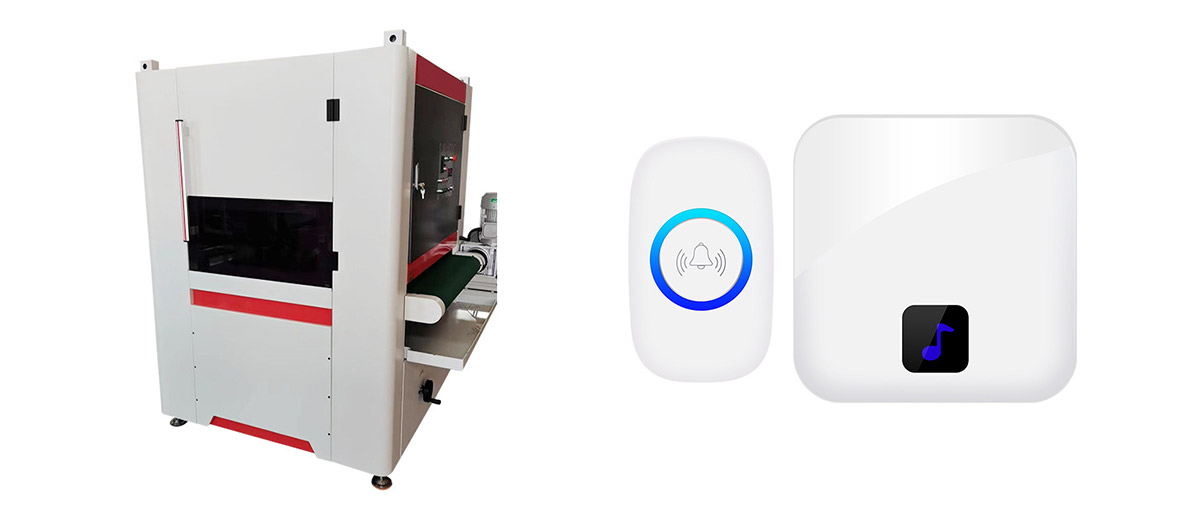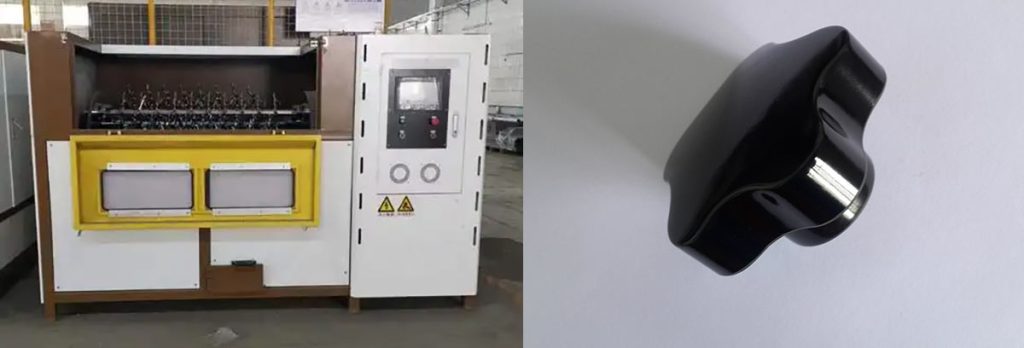

Polishing plastics under improper conditions can lead to melting, compromising the workpiece. Friction during polishing generates significant heat, with flash temperatures reaching between 700–900 K. These extreme conditions can cause viscous flow in materials, increasing the risk of melting. Most of the energy from grinding converts into heat, which can damage the workpiece by causing burns or residual stresses. To achieve a smooth finish and effectively use polish for plastics, controlling temperature during polishing is essential to prevent such damage. Proper conditions, such as using cooling agents or adjusting speeds, help maintain the integrity of the material.
Key Takeaways
- Keep the temperature steady while polishing to avoid melting. Use coolants and adjust speed for better results.
- Learn the melting points of plastics. This helps pick the right materials and methods for polishing.
- Watch for overheating signs like color changes or stickiness. Spotting these early helps protect the plastic by making quick changes.
- Use tools made for plastics. The right tools lower friction and heat, giving a smooth finish.
- Don’t press too hard while polishing. Let the tool work to keep the plastic safe and neat.
Understanding the Melting Point of Plastics
Common Melting Points of Popular Plastics
Plastics exhibit a wide range of melting points depending on their composition. Understanding these values is crucial for processes like injection molding and machining hdpe. For example, high-density polyethylene (HDPE) melts between 130-135°C, making it suitable for applications like food packaging and hot water pipes. In contrast, low-density polyethylene (LDPE) melts at a lower range of 105-115°C, offering flexibility for films and soft packaging.
The table below highlights the melting points of popular plastics:
| Plastic Type | Melting Point (°C) | Notes |
|---|---|---|
| Polytetrafluoroethylene (PTFE) | ~327 | Highest melting point; decomposes above 450°C. |
| High-Density Polyethylene (HDPE) | 130-135 | Suitable for hot water pipes and food packaging. |
| Low-Density Polyethylene (LDPE) | 105-115 | Flexible; used in films and soft packaging materials. |
| Polypropylene (PP) | 164-170 | Excellent heat resistance; semi-crystalline nature. |
| Polystyrene (PS) | 240 | Brittle at -30°C; melting range 140-180°C. |
| Polyamide (Nylon) | 215 (PA6), 250 (PA66) | Varies by type; used in textiles and engineering applications. |
| Polyvinyl Chloride (PVC) | ~212 | Softens at 80°C; decomposes at 130°C, producing hydrogen chloride. |
These values emphasize the importance of controlling plastic temperature during machining and molding processes to avoid damage.
How Polishing Generates Heat?
Polishing plastics involves friction, which generates heat. This heat can raise the plastic temperature beyond its melt temperature, causing deformation or surface damage. The process of machining hdpe, for instance, requires careful monitoring of heat to maintain consistency in the final product. Frictional heat arises from the interaction between the polishing tool and the plastic surface. Without proper cooling or speed adjustments, the temperature can quickly exceed safe limits.
Why Some Plastics Are More Prone to Melting?
Thermoplastics, such as HDPE and LDPE, are more prone to melting due to their lower melt temperatures. These materials soften and flow when exposed to heat, making them ideal for injection molding but challenging for processes like cnc plastic machining. On the other hand, thermosets resist melting because their molecular structure forms cross-links that prevent flow. For example, machining hdpe requires precise temperature control to avoid exceeding its melt temperature, ensuring the material retains its structural integrity.
Understanding the melting behavior of plastics helps optimize machining and molding processes, ensuring high-quality results.
How Polishing Affects Plastic Workpieces?
The Role of Friction in Heat Generation
Friction plays a critical role in the heat generated during polishing. When a polishing tool moves across a plastic surface, the interaction between the two materials creates resistance. This resistance converts mechanical energy into heat energy. The amount of heat depends on factors like the speed of the tool, the pressure applied, and the type of plastic being polished. For instance, thermoplastics with lower melting points are more susceptible to heat buildup. Without proper control, this heat can quickly accumulate and compromise the workpiece.
Surface Damage Caused by Excessive Heat

Excessive heat during polishing can lead to significant surface damage. When the temperature exceeds the melting point of the plastic, the material may soften or deform. This can result in uneven surfaces, loss of structural integrity, or even complete failure of the workpiece. Additionally, overheating can cause discoloration or burns on the surface, which are difficult to repair. Maintaining a consistent temperature is essential to avoid these issues and preserve the quality of the workpiece.
Signs of Overheating During Polishing
Recognizing the signs of overheating can help prevent damage to the workpiece. Common indicators include visible melting, a sticky or tacky surface, and changes in the material’s color. In some cases, the plastic may emit an unusual odor, signaling that it is nearing its thermal limits. Monitoring these signs allows operators to adjust their techniques, such as reducing speed or applying cooling agents, to protect the workpiece from further harm.
Temperature Control Secrets for Polishing Plastics
Using Cooling Agents to Reduce Heat
Cooling agents play a vital role in maintaining the temperature during plastic polishing. Excessive heat can compromise the workpiece by causing deformation or surface damage. To counteract this, operators often use non-aromatic, water-soluble coolants. These coolants not only reduce heat but also enhance surface finishes and extend tool longevity. Pressurized air and spray mists are also effective methods for cooling, especially when working with thermoplastics like HDPE or LDPE.
Sharp tools further improve performance by minimizing friction, which reduces heat generation. Avoiding excessive clamping and cutting forces also helps maintain a stable temperature profile. These techniques ensure that the workpiece retains its dimensional accuracy and tight tolerances, even under demanding conditions.
Adjusting Polishing Speeds for Optimal Results
Polishing speeds significantly influence the temperature generated during the process. High speeds increase friction, which raises the temperature and risks melting the plastic. Adjusting the speed to match the material’s properties is essential for precision machining. For instance, thermoplastics with lower melting points require slower speeds to prevent overheating.
Systematic checks and controlled conditions help maintain precision and dimensional accuracy. Operators often rely on vibratory polishing or bead blasting to optimize surface finishes while keeping the temperature within safe limits. These methods ensure that the workpiece achieves the desired quality without compromising its structural integrity.
Selecting the Right Tools and Materials
The choice of tools and materials directly impacts the effectiveness of plastic polishing. Tools must align with the material’s thermal resistance and tensile strength to ensure optimal results. For example, plastics with high impact strength and wear resistance perform better during machining. Dimensional stability is another critical factor, as it ensures the workpiece maintains precision across varying conditions.
The table below highlights key criteria for selecting tools and materials:
| Criteria | Explanation |
|---|---|
| Mechanical Properties | Impact strength, wear resistance, and dimensional stability are crucial for effective polishing. |
| Surface Finishing Techniques | Techniques like blasting, grinding, and polishing enhance functionality and appearance. |
| Tool Selection | Tools must match material properties such as thermal resistance and tensile strength. |
| Temperature Management | Effective thermal regulation is essential due to plastics’ lower melting points compared to metals. |
Material properties like thermal expansion and chemical resistance also influence tool selection. Proper temperature management during injection molding and polishing ensures the workpiece meets tight tolerances and achieves a professional finish.
Monitoring Temperature During the Process
Monitoring temperature during plastic polishing is essential to prevent overheating and ensure a smooth finish. Operators can use several methods to track and control the heat generated during the process. These techniques help maintain the integrity of the workpiece and avoid costly mistakes.
One effective method involves using infrared thermometers or thermal cameras. These tools provide real-time temperature readings, allowing operators to identify hot spots on the plastic surface. By addressing these areas promptly, they can prevent the material from reaching its melting point. Another approach involves embedding temperature sensors directly into the polishing equipment. These sensors continuously monitor the heat levels and alert operators when the temperature exceeds safe limits.
Visual inspection also plays a crucial role in temperature management. Operators should look for signs of overheating, such as discoloration, surface deformation, or unusual odors. These indicators often signal that the plastic is nearing its thermal threshold. Adjusting the polishing speed or applying cooling agents can help bring the temperature back to a safe range.
Maintaining consistent temperature levels requires a combination of tools and techniques. For instance, using water-based coolants or air jets can dissipate heat effectively. Additionally, operators should periodically pause the polishing process to allow the material to cool naturally. This practice reduces the risk of thermal damage and ensures a high-quality finish.
Proper temperature monitoring not only protects the workpiece but also extends the lifespan of polishing tools. By implementing these strategies, operators can achieve professional results while minimizing the risk of errors.
Common Mistakes to Avoid
Polishing at High Speeds Without Cooling
Polishing at high speeds generates excessive friction, which leads to rapid heat buildup. This heat can soften or melt the plastic, damaging the workpiece. Operators often overlook the importance of cooling during high-speed polishing. Without cooling agents, the temperature can exceed the melting point of the material. This mistake is particularly problematic when working with thermoplastics, as they have lower thermal resistance.
To avoid this issue, operators should use cooling methods such as water-based sprays or pressurized air. These techniques help dissipate heat and maintain a stable temperature. Adjusting the polishing speed to match the material’s properties also minimizes the risk of overheating. Proper cooling ensures the workpiece remains intact and achieves a smooth finish.
Using Inappropriate Tools for Plastic Materials
Selecting the wrong tools for plastic polishing can lead to poor results and potential damage. Tools designed for metals or other materials may generate excessive heat or cause uneven surfaces. For instance, abrasive tools with high friction coefficients can quickly raise the temperature of the plastic, risking deformation.
Operators should choose tools specifically designed for plastic materials. These tools often feature lower friction surfaces and are optimized for heat management. Additionally, using sharp tools reduces friction and prevents unnecessary heat generation. Proper tool selection ensures the workpiece retains its structural integrity and meets the desired specifications.
Ignoring Early Signs of Overheating
Failing to recognize the early signs of overheating can result in irreversible damage to the workpiece. Common indicators include discoloration, surface deformation, and unusual odors. These signs often appear before the plastic reaches its melting point, providing an opportunity to adjust the process.
Operators should monitor the workpiece closely during polishing. Visual inspections and temperature monitoring tools, such as infrared thermometers, can help identify problem areas. Addressing these issues promptly by reducing speed or applying cooling agents prevents further damage. Recognizing and responding to overheating signs ensures the workpiece maintains its quality and functionality.
Applying Excessive Pressure During Polishing

Applying excessive pressure during polishing can lead to significant damage to plastic workpieces. When too much force is applied, the friction between the polishing tool and the plastic surface increases. This heightened friction generates more heat, which can quickly raise the material’s temperature beyond its melting point. As a result, the plastic may soften, deform, or even develop cracks.
Excessive pressure also affects the quality of the surface finish. Instead of achieving a smooth and polished appearance, the workpiece may end up with uneven textures, scratches, or gouges. These imperfections not only compromise the aesthetic appeal but also weaken the structural integrity of the material.
Tip: Always let the polishing tool do the work. Applying light, consistent pressure ensures better results and reduces the risk of overheating.
To avoid these issues, operators should focus on maintaining a gentle and steady hand during the polishing process. Here are some practical tips:
- Use the right tool settings: Adjust the speed and pressure settings on the industrial polishing equipment to match the material’s properties.
- Monitor the process: Pay attention to signs of overheating, such as discoloration or a sticky surface, and reduce pressure immediately if these occur.
- Practice proper technique: Hold the tool at the correct angle and move it evenly across the surface to distribute pressure.
Additionally, using high-quality tools designed for plastic materials can help minimize the need for excessive force. Sharp tools reduce friction and allow for smoother polishing with less effort.
By avoiding excessive pressure, operators can protect their workpieces from damage and achieve a professional, polished finish.
Conclusion
Polishing plastics requires careful temperature management to prevent melting and surface damage. Understanding the melting points of different plastics and how friction generates heat is crucial for success.
Key Tip: Always monitor the process and adjust techniques to maintain safe temperatures.
Using cooling agents, selecting appropriate tools, and controlling polishing speeds ensure a smooth finish without compromising the material. Avoiding common mistakes, such as excessive pressure or ignoring signs of overheating, protects workpieces and enhances results. By applying these strategies, operators can achieve professional-quality finishes while preserving the integrity of their materials
